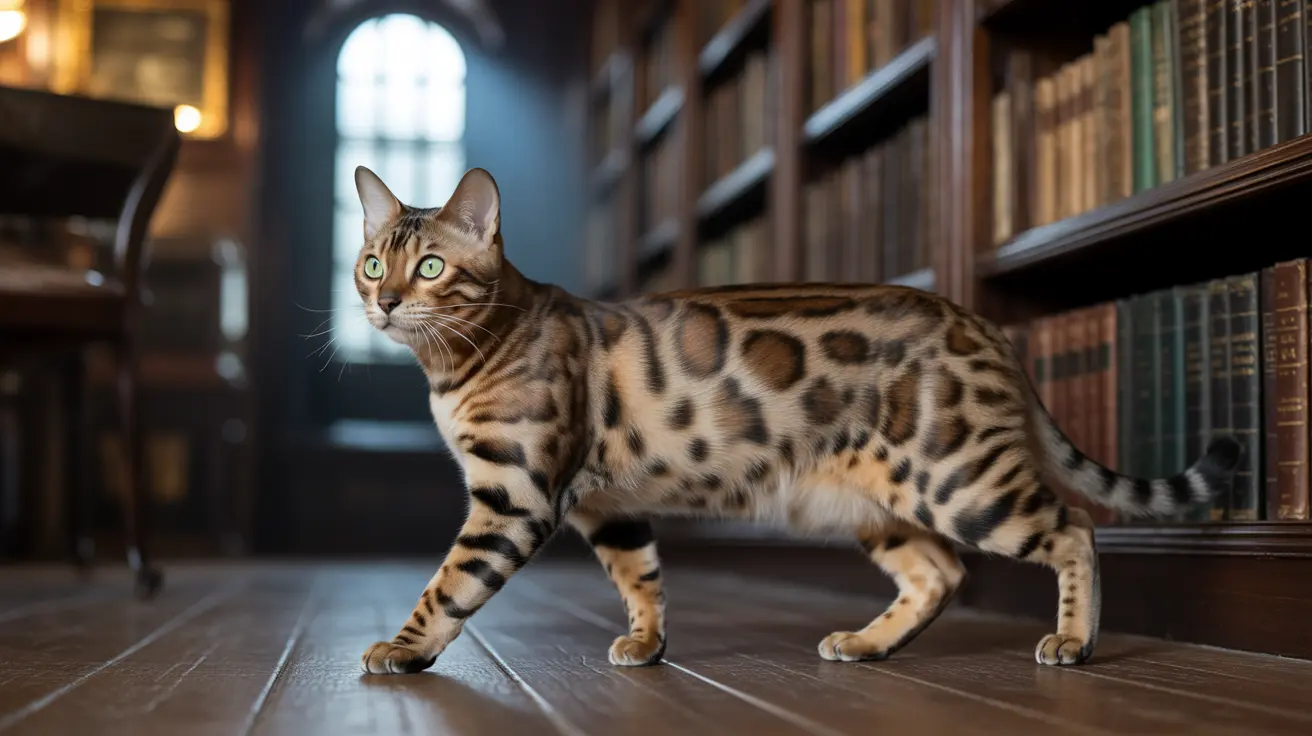Have you ever wondered how your cat seamlessly navigates through dimly lit rooms or stalks mysterious shadows at dusk? The secret lies in their remarkable visual adaptations that make cat eyes in the dark a true marvel of evolutionary engineering.
From their reflective eyeshine to specialized light-catching cells, cats possess an intricate system of visual features that enable them to thrive in low-light conditions. Let's explore the fascinating world of feline night vision and understand what makes their eyes so uniquely equipped for darkness.
The Amazing Architecture of Cat Eyes
At the heart of a cat's superior night vision lies several specialized anatomical features. The most notable is the tapetum lucidum, a reflective layer behind the retina that acts like a biological mirror, bouncing light back through the retina for a second chance at detection. This is what creates that distinctive eyeshine when light hits your cat's eyes at night.
Their retinas also contain an abundance of rod cells – up to eight times more than human eyes. These specialized cells are highly sensitive to light and motion, though they trade this advantage for reduced color perception compared to humans.
How Cats Master Low-Light Vision
Your feline friend can see in light conditions six times dimmer than what humans need. Their vertical, slit-shaped pupils can dilate dramatically, expanding up to 135 times their smallest size – far more than our modest 15-fold dilation capability. This remarkable adaptation allows them to control light intake with incredible precision.
While cats excel in dim conditions, they cannot see in complete darkness. They need at least some ambient light to activate their visual system, though it's far less than what humans require for functional vision.
Nighttime Navigation and Hunting
Cats' enhanced night vision serves a crucial evolutionary purpose. As crepuscular hunters, they're most active during dawn and dusk, when their superior low-light vision gives them a significant advantage in catching prey. Their motion-sensitive rod cells help them detect even the slightest movements in near-darkness.
This natural adaptation explains why your indoor cat might suddenly become more active during twilight hours or engage in those famous "midnight zoomies." They're simply following their ancestral instincts, powered by their specialized visual capabilities.
Supporting Your Cat's Night Vision
While cats have impressive night vision, aging can affect this ability. Providing subtle lighting in key areas of your home can help older cats navigate more confidently. Regular veterinary check-ups are also essential to monitor for age-related vision changes that might affect their nocturnal abilities.
Frequently Asked Questions
Why do cat eyes glow in the dark and what causes that eyeshine?
Cat eyes appear to glow due to the tapetum lucidum, a reflective layer behind their retina that bounces light back through the eye. This creates the characteristic eyeshine when light hits their eyes at night, and helps them maximize available light for better vision in darkness.
How well can cats actually see in complete darkness compared to humans?
While cats can see in much dimmer conditions than humans, they cannot see in complete darkness. They need at least some ambient light to see, though they can function with only one-sixth of the light required by humans.
What special adaptations do cat eyes have for seeing in low-light conditions?
Cats have several adaptations: the tapetum lucidum, a higher concentration of rod cells in their retinas, large corneas, and pupils that can dilate extensively. These features work together to maximize their ability to see in low light.
Can my cat see colors at night or do they see mostly in shades of gray?
Cats see muted colors at all times due to fewer cone cells in their retinas. At night, their vision relies primarily on rod cells, which detect light and motion but not color, resulting in a mainly grayscale view of their environment.
How can I help an aging cat with declining night vision navigate better at home?
You can help by maintaining consistent furniture arrangements, using night lights in hallways and around litter boxes, and keeping paths clear of obstacles. Regular veterinary check-ups can also help monitor and address any vision changes.
Understanding your cat's incredible night vision capabilities helps explain their mysterious nocturnal behaviors and ensures you can provide the best environment for their unique visual needs. While they may seem to have supernatural sight in the dark, their abilities are the result of millions of years of evolutionary adaptation perfectly suited to their role as twilight hunters.






